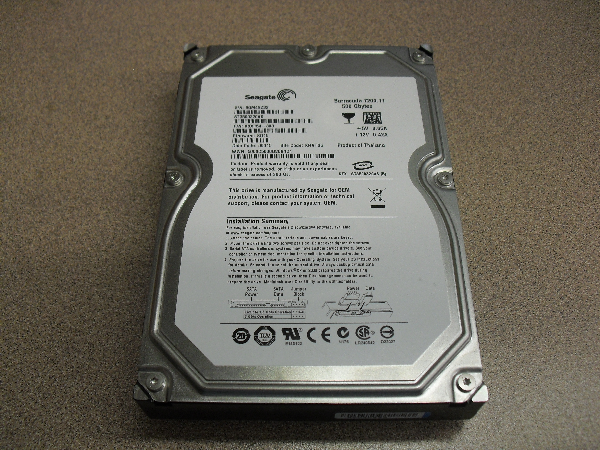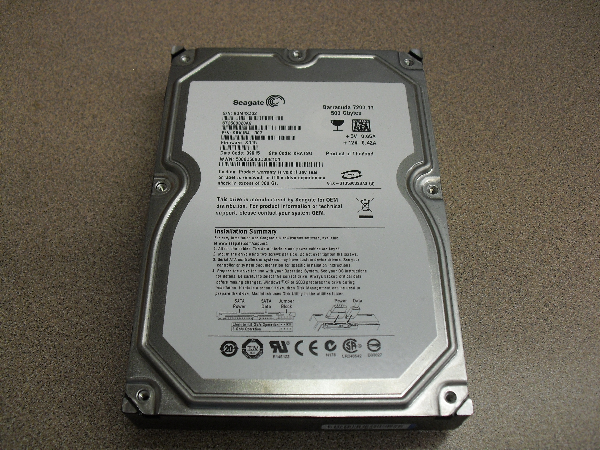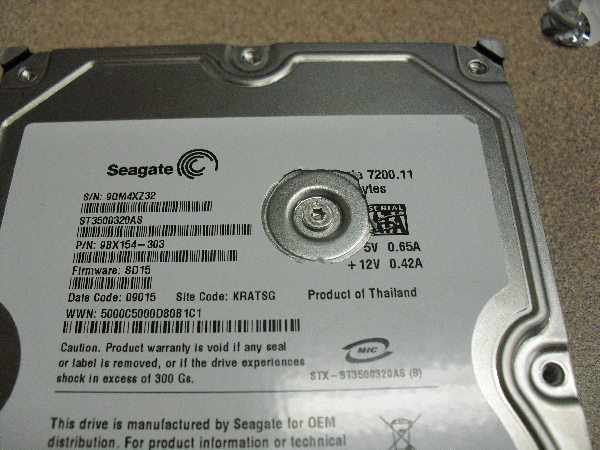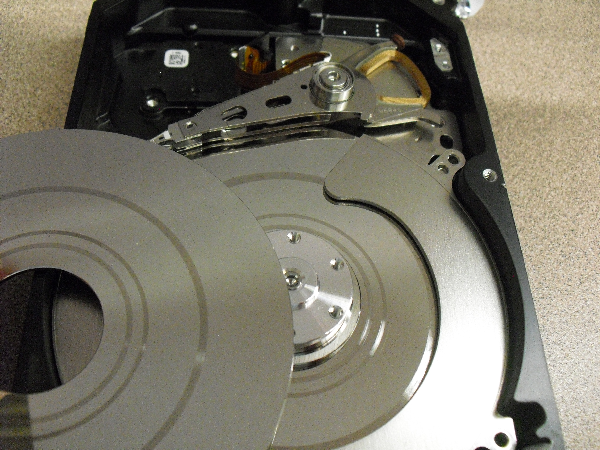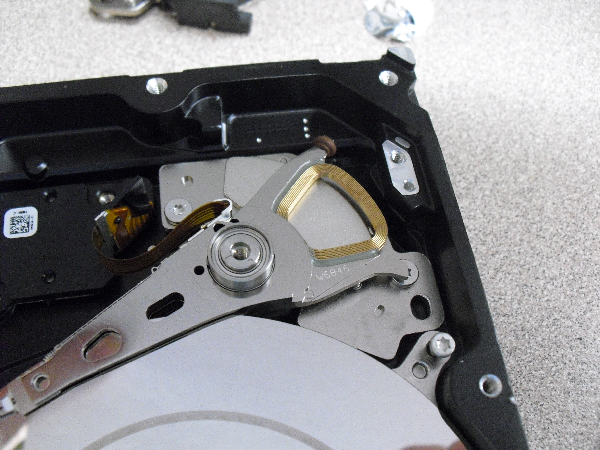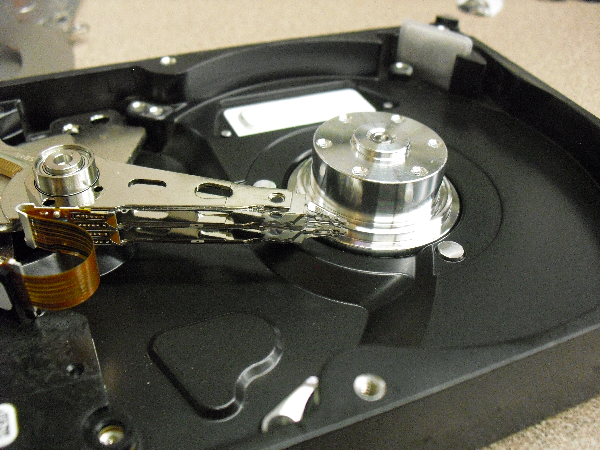…couldn’t put this drive back together again.
Recently, one of the HP workstations in the lab refused to boot. We narrowed the problem down to the hard drive (never a good thing). The drive had completely failed; even our hardware duplicator couldn’t do anything with it.
Usually, when a hard drive fails, there’s very little that can be done, unless you have very specialized equipment (including a cleanroom or at least a filtered flow hood) and expertise. However, I’d heard stories of people having success carefully unsticking an errant read head and bringing drives back to life long enough to recover some data, so I figured I’d see what was going on. (Don’t try this at home, folks; this drive was headed for the Dumpster anyway.) Here’s what I found:
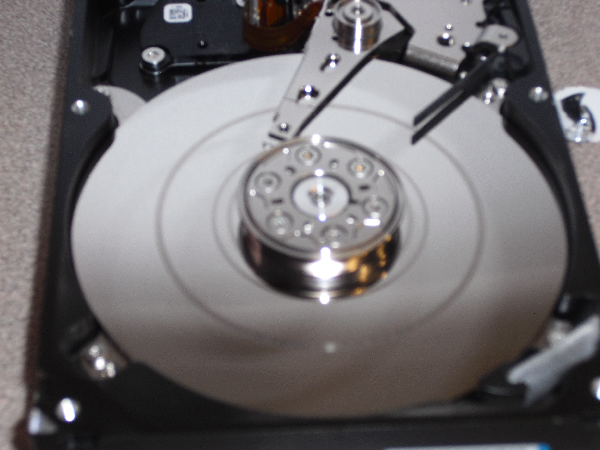
Uh, oh -- that's not good. (That large scratch in the middle of the platter should not be there.) Well, we can stop being careful, now. Note the properly-parked drive heads acting as if nothing is wrong...
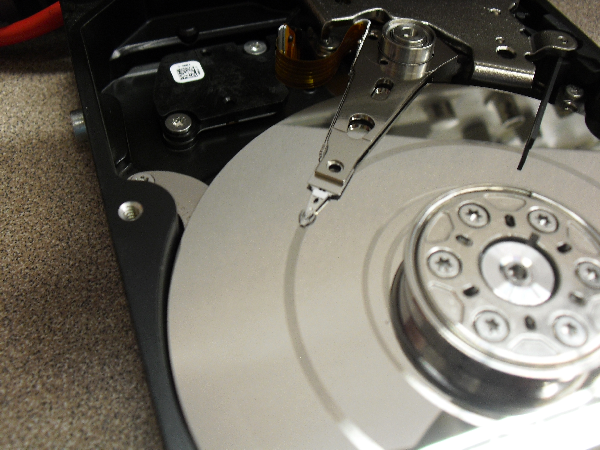
We have the culprit! (Head crash while in the middle of the platter. The head was found parked, as shown in the last picture; I moved it here to try to see what parts hit.)

